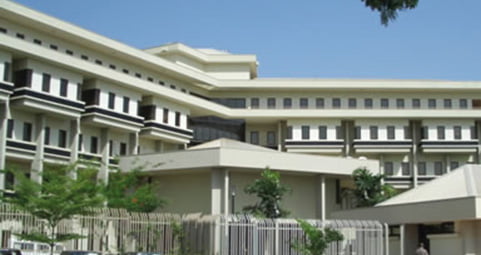The terrible news that a bomb exploded in the U.N. compound in Abuja, Nigeria today sent my mind racing back three years, when I used to visit the building often. It’s not yet clear who is responsible for the bombing, or what their motives were. But as we’re waiting, it might be helpful to know a bit about what the U.N. compound was like, who had offices there, and what on earth someone could have been targeting.
First the aesthetics: Abuja, as a city, looks a bit like a metropolis in the Arabian Gulf (or, say, Miami.) It’s spread out, the buildings are big and surrounded by parking lots and gates. You need a car to go anywhere. Even by that measure, the U.N. compound was separated from the other buildings in town — about a 20 minute drive from the center of the city, and about a five minute drive from the U.S. Embassy. If the bomb went off at the U.N. compound, then that was the target; there’s no chance it could have been intended for another building as there are none nearby. That’s clearly why Nigeria’s minister of state for foreign affairs told BBC that this constituted an “act of international terrorism” — against the international community.
The U.N. compound itself was a circular building, with a large parking lot stretching out in front of it. (It would have been fairly easy for someone to drive up to the building without a security check.) Before entering the compound, you passed through a security point at the front entrance. Once inside, there were about four or five floors, with offices from different agencies scattered about. The construction was spacious and there weren’t a terribly large number of security guards. If I had entered to see UNICEF, I could have easily gone into another office without anyone minding.
As more details emerge, some key questions in my mind will include: Which wing of the building (and hence, which agencies) were targeted and how many people carried out the attack. The former might give some clues as to the point that this attack was trying to make. The latter might give clues about the perpetrators’ sophistication and level of infiltration.
This is a sad day for Nigeria, and for anyone who watches Nigeria. This may well be the moment that we look back on to mark the beginning of Nigeria’s days as a terrorist haven. Most commentators are assuming (rather reasonably) that the Northern Islamist militant group Boko Haram may be implicated. If that’s the case, this attack represents a big shift in targets — from almost exclusively government ones to international organizations. It also marks a logistical shift. Up to this point, targets have been local and methods rudimentary. This clearly ups the ante.
